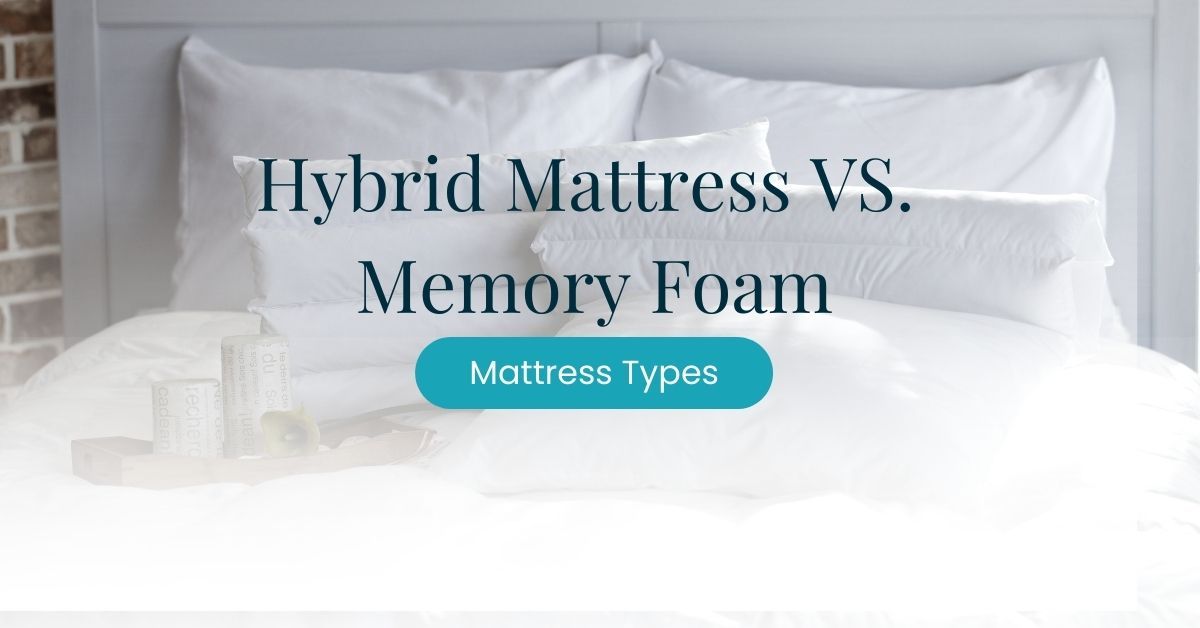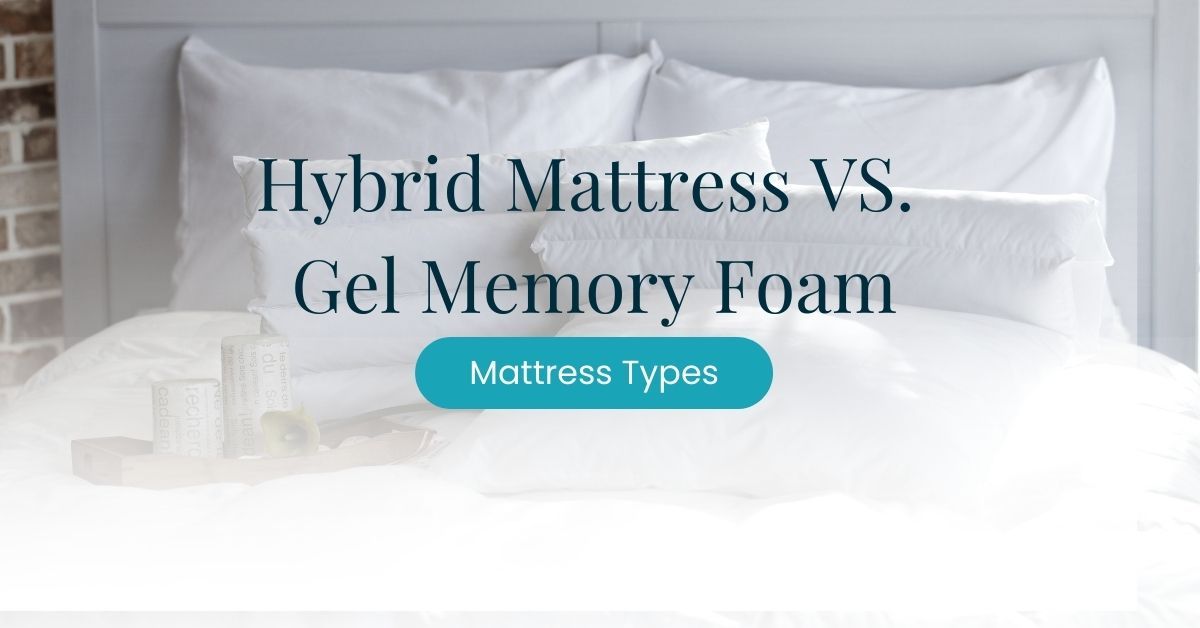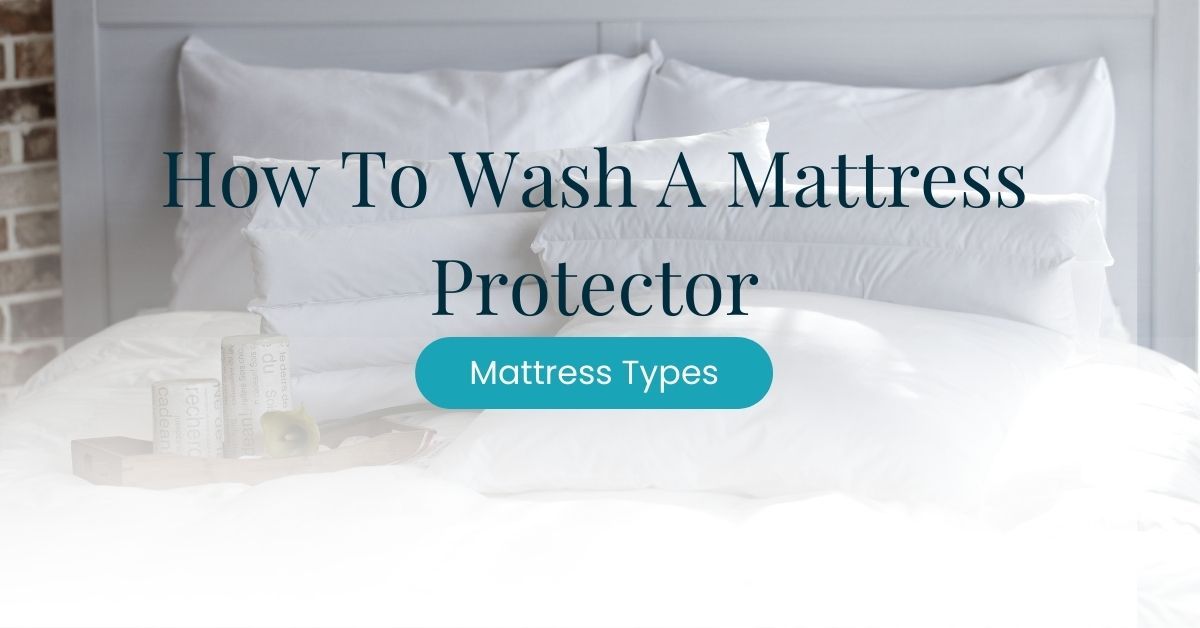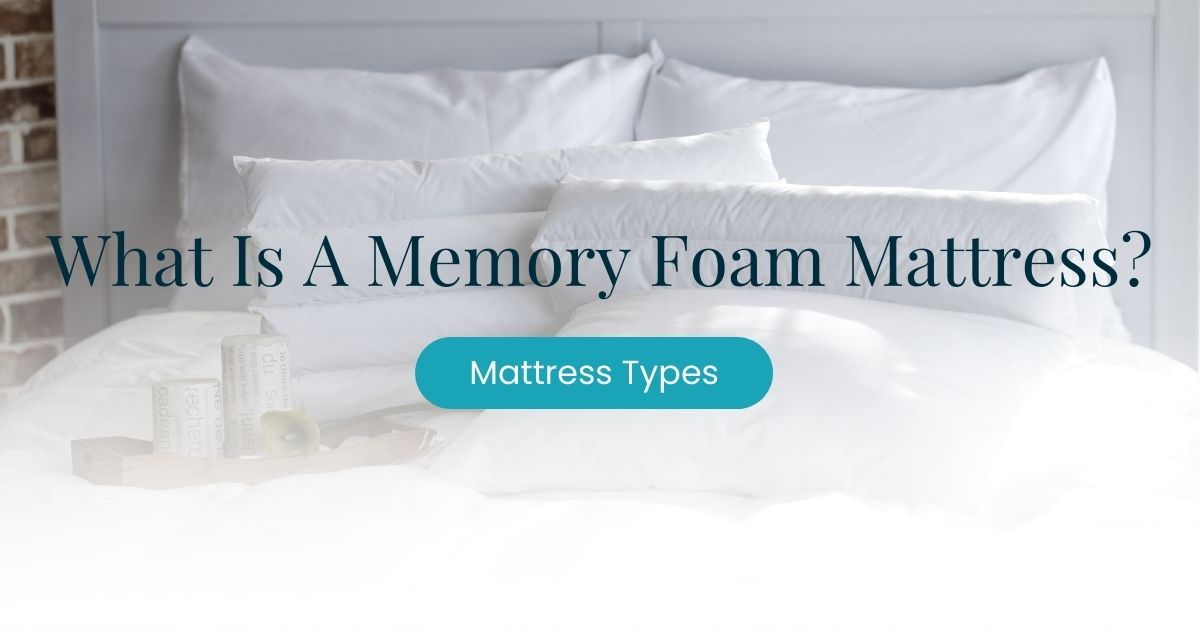Are you looking for a new mattress and struggling to choose between a hybrid or memory foam mattress? They’re both popular mattress types with similarities and key differences helping benefit specific types of sleepers.
In this article, we’ll break down the key differences between hybrid and memory foam mattresses, including support, conforming, feel, temperature regulation, and cost, so you can make an informed decision for your next purchase.
Don’t worry, we account for your sleeping position, weight, and more factors so you know how each feature will benefit you.
Overview of Hybrid Mattresses
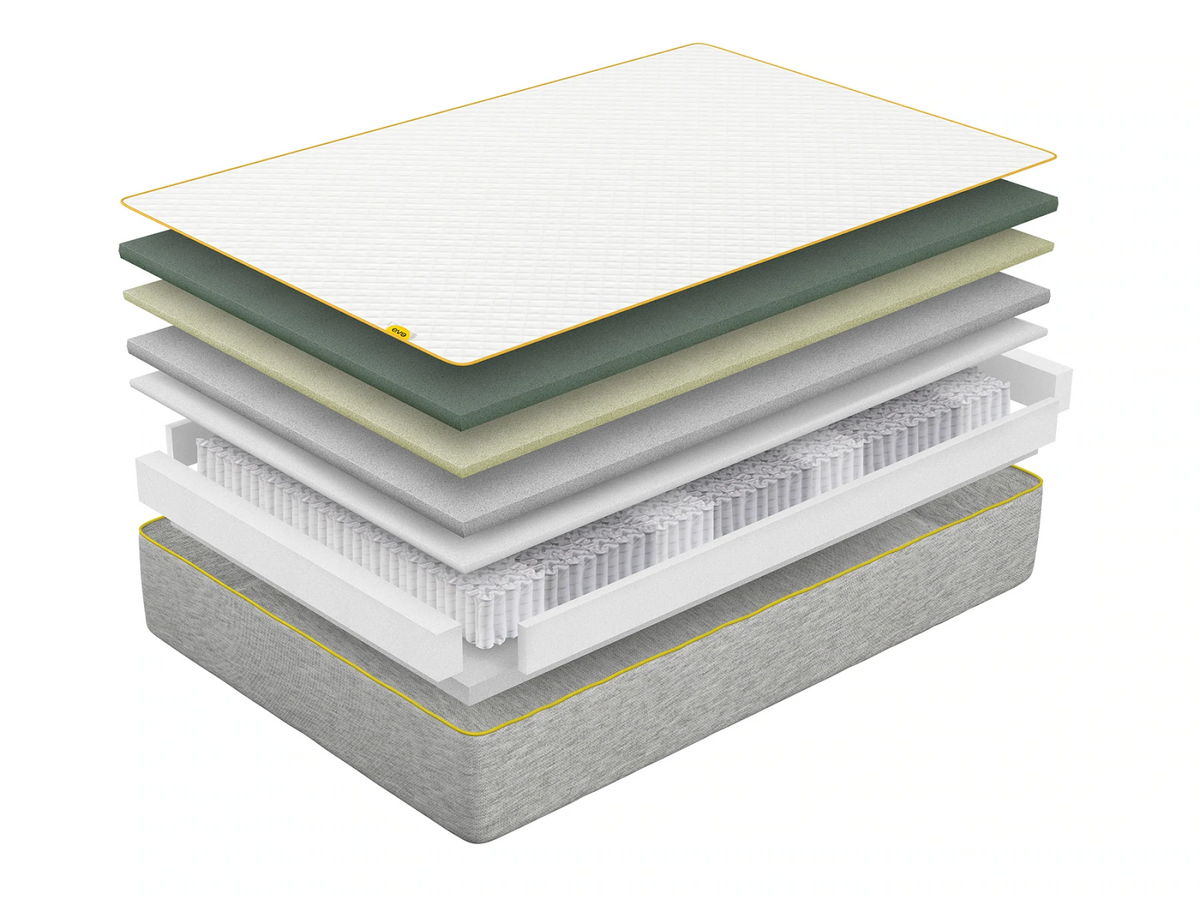
A hybrid mattress combines the features of innerspring and memory foam or latex mattresses. It includes a coil layer for core support and at least 2 inches of memory foam or latex as the comfort layer. Be cautious when shopping for a hybrid mattress; ensure it has both a coil layer and a memory foam or latex layer.
Hybrid mattresses were designed to offer the benefits of innerspring and memory foam or latex mattresses while addressing their drawbacks.
For example, a memory foam hybrid provides the conforming feel of memory foam and the bounce and breathability of a coil layer. This combination caters to the needs of various sleepers, such as stomach sleepers, who require additional support and bounce to maintain spinal alignment.
Coil types in hybrid mattresses include:
- Pocketed spring coils, which help with motion isolation as the springs are individually pocketed and move independently.
- Other coil types, such as Bonnell, offset, or continuous wire, which are more affordable but more prone to motion transfer.
Hybrid Mattress Benefits
Although you can find different types of foam and springs within hybrid mattresses, they all share some common advantages:
- Temperature Regulation: The coil support system promotes airflow, preventing overheating and offering a cooler sleep experience than all-foam models. Cooling technologies, such as gel, copper, or graphite infusions, enhance heat dissipation.
- Ease of Movement and Responsiveness: The bouncy, responsive surface allows sleepers to change positions easily, making hybrids suitable for sex and ideal for those who dislike sinking too deeply into their bed.
- Support and Comfort: Hybrids generally have a firmer sleep surface due to the coils, providing a balance of comfort and support, making them suitable for various sleeping positions, heavier weights, and combination sleepers.
- Edge Support: The coil support core provides sturdy edges, enabling sleepers to use the entire surface without sagging.
- Durability: Coil systems are durable materials, contributing to the longevity of hybrid mattresses and reducing the likelihood of premature sagging.
Overview Of A memory foam mattress
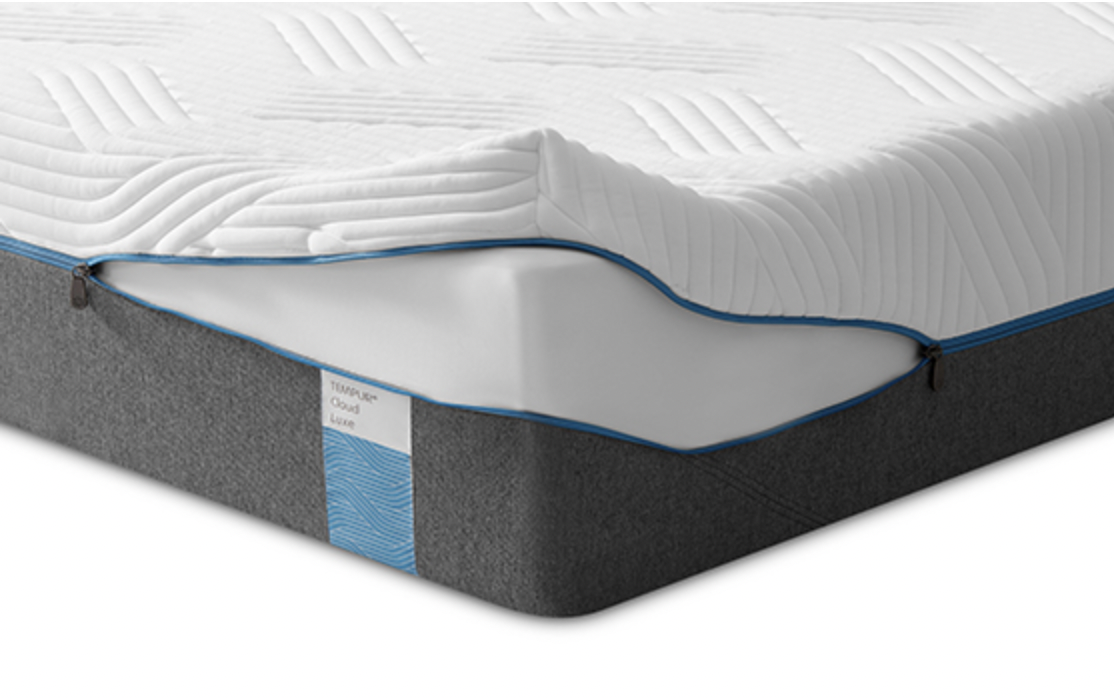
Originally developed by NASA for aircraft seat cushioning, memory foam, also known as viscoelastic foam, has become a popular mattress material due to its pressure-relieving properties.
Memory foam mattresses typically feature a memory foam comfort layer over a high-density polyfoam support core, with some models incorporating additional materials, such as latex or specialty polyfoam, to enhance durability, responsiveness, or temperature neutrality.
Memory foam conforms to the body, distributing weight away from pressure points. However, its conforming nature can trap heat. To tackle this issue, manufacturers use open-cell structures for breathability, infuse the foam with cooling substances like gel, copper, or graphite, or incorporate covers designed to wick away heat.
Made from polyurethane, memory foam is known for its soft feel and slow compression when pressure is applied. It responds to body heat and pressure, contouring to your body’s curves and providing pressure-point relief. This contouring evenly distributes body weight, alleviating pressure on joints and potentially reducing back pain by supporting your spine’s natural curvature.
Memory foam mattresses contain various densities of memory foam in their comfort, transition, and support layers. The order, thickness, and density of these layers determine the mattress’s firmness level, offering options for every firmness category from soft to firm.
They provide excellent contouring and pressure relief for side sleepers, support for back sleepers, and can be suitable for stomach sleepers if they are firm enough to prevent the hips from sinking.
Benefits Of Memory Foam
Memory foam offers a range of advantages that cater to different sleeping preferences:
- Pressure relief: By conforming to your body using heat, memory foam effectively relieves pressure on areas such as hips and shoulders, making it well-suited for side sleepers.
- Motion isolation: Memory foam excels at isolating motion, offering an excellent choice for couples who wish to minimise disturbances from each other’s movements.
- Spinal alignment: Memory foam assists in maintaining a neutral spine position, potentially reducing back problems, especially for those experiencing lower back pain or for back sleepers.
- Sound absorption: In contrast to innerspring mattresses that may squeak, memory foam absorbs and reduces sound, ensuring a peaceful night’s rest.
- Hypoallergenic properties: Memory foam’s natural resistance to dust mites, dust, and other allergens makes it an appealing option for allergy sufferers.
- Contouring: Memory foam not only cushions the joints but also relieves pressure on heavier areas of the body and fills in gaps, promoting proper spinal alignment.
- Quietness: Unlike some hybrid mattresses with springs, memory foam mattresses remain quiet when you move around, ensuring a disturbance-free sleep experience.
Drawbacks Of Memory Foam
Memory foam mattresses have a few disadvantages to consider:
- Overheating: Memory foam can trap heat, which may cause discomfort during sleep. Manufacturers have addressed this issue by using open-cell or gel-infused memory foam to enhance airflow and regulate temperature.
- Motion Isolation & Responsiveness: While memory foam effectively isolates motion, its contouring can create a “quicksand” feeling, making movement more difficult for some sleepers. Additionally, memory foam is slow to respond to movement, potentially causing sleepers to feel trapped or stuck.
- Off-Gassing: Memory foam may release off-gassing odours due to volatile organic compounds (VOCs) from the manufacturing process. However, many manufacturers now use CertiPUR-US certified memory foam, which has been tested and found to be low in VOCs and free of harmful chemicals.
- Edge Support: Memory foam mattresses may lack edge support, leading to sinkage and eventual breakdown at the edge. Denser foam is sometimes used to counteract this issue.
- Sagging: Memory foam mattresses can sag over time. Choosing a mattress with high-density memory foam can help extend its lifespan and maintain its support.
Hopefully, you can confidently distinguish between hybrid and memory foam mattresses. So, let’s look at their pros and cons.
Mattress | Advantages | Disadvantages |
Hybrid Mattress |
|
|
Memory Foam Mattress |
|
|
10 Differences Between Memory Foam vs Hybrid Mattresses
How are they different, and how do your sleeping preferences and environment play a role in this?
| Feature | Memory Foam Mattress | Hybrid Mattress |
|---|---|---|
| Price | Available in a vast price range, but generally less expensive | Available in a vast range, more expensive due to additional pocketed coil layer |
| Durability | Varies with foam density, may be more durable, lasts an average of 7 years | Pocketed coils have a higher gauge (thinner material) prone to wear and tear, lasts an average of 7 years |
| Motion Isolation | Excellent motion isolation | Good motion isolation due to individually encased pocketed coils |
| Temperature Regulation | Technological advancements have improved temperature regulation | Very good at temperature regulation due to pocket coils promoting airflow |
| Responsiveness | Body-conforming and pressure-relieving, but not as responsive | Enhanced responsiveness due to pocketed coil layer’s bounce |
| Pain-Reducing | Good at reducing joint pain and back pain | Equally good at reducing pain if the hybrid has a memory foam comfort layer |
| Pressure relief and back pain | Good for side sleepers, may be too soft for back and stomach sleepers weighing over 100 kg | Good for side, back, and stomach sleepers, can support more than 100 kg without sinking |
| Silent Sleep | Silent due to shock-absorbing properties | May squeak with wear and tear |
| Edge Support | Lacks strong edge support | Stronger edge support due to springs around the perimeter |
| Off-gassing | May have a more noticeable initial odour | Less intense odour, easier to dissipate |
| Use of Box Spring | Not needed due to shock-absorbent materials | Not needed, but check manufacturer’s recommendations |
Who are hybrid mattresses best for?
A hybrid mattress might be perfect if you can relate to one or two of the situations below.
- You are a hot sleeper.
- You weigh more than 100 kg.
- You are a back sleeper or stomach sleeper.
- You are a combination sleeper.
- You toss and turn a lot at night.
- You share a bed and need edge support.
- You like sleeping on the mattress.
- You don’t mind splurging on a mattress.
With that, here are some of the best hybrid mattress recommendations:
Who are memory foam mattresses best for?
A memory foam mattress might be perfect for you if you can relate to one or two of the situations below.
- You are a cold sleeper.
- You are a side sleeper.
- You like sleeping in the mattress.
- You share a bed, and you are a light sleeper.
- You are on a tight budget.
With that, here are some best memory foam mattress recommendations:
5 Sources
- Forty-Year-Old Foam Springs Back With New Benefits. (2005). Retrieved from NASA Spinoff:
https://spinoff.nasa.gov/Spinoff2005/ch_6.html - Krebs, M., & Hubel, R. (2016). The Adjustment of Physical Properties of Viscoelastic Foam – the Role of Different Raw Materials. Retrieved from Semantics Scholar:
https://www.semanticscholar.org/paper/The-Adjustment-of-Physical-Properties-of-Foam-%E2%80%93-the-Krebs-Hubel/bdd7e36f258fa75cd0452befe1b059268774e0b2 - Wu, A., March, L., Zheng, X., Huang, J., Wang, X., Zhao, J., . . . Hoy, D. (2020, March). Global low back pain prevalence and years lived with disability from 1990 to 2017: estimates from the Global Burden of Disease Study 2017. Retrieved from National Center of Biotechnology Information:
https://www.ncbi.nlm.nih.gov/pmc/articles/PMC7186678/ - Kovacs, F. M., Abraira, V., Peña, A., Martín-Rodríguez, J. G., Sánchez-Vera, M., Ferrer, E., . . . Mufraggi, N. (2003, November 15). Effect of firmness of mattress on chronic non-specific low-back pain: randomised, double-blind, controlled, multicentre trial. Retrieved from National Center for Biotechnology Information:
https://pubmed.ncbi.nlm.nih.gov/14630439/ - Mattress Longevity / Lifespan Comparisons. (2017, April 7). Retrieved from Sleep Like the Dead:
https://www.sleeplikethedead.com/mattress-longevity.html


